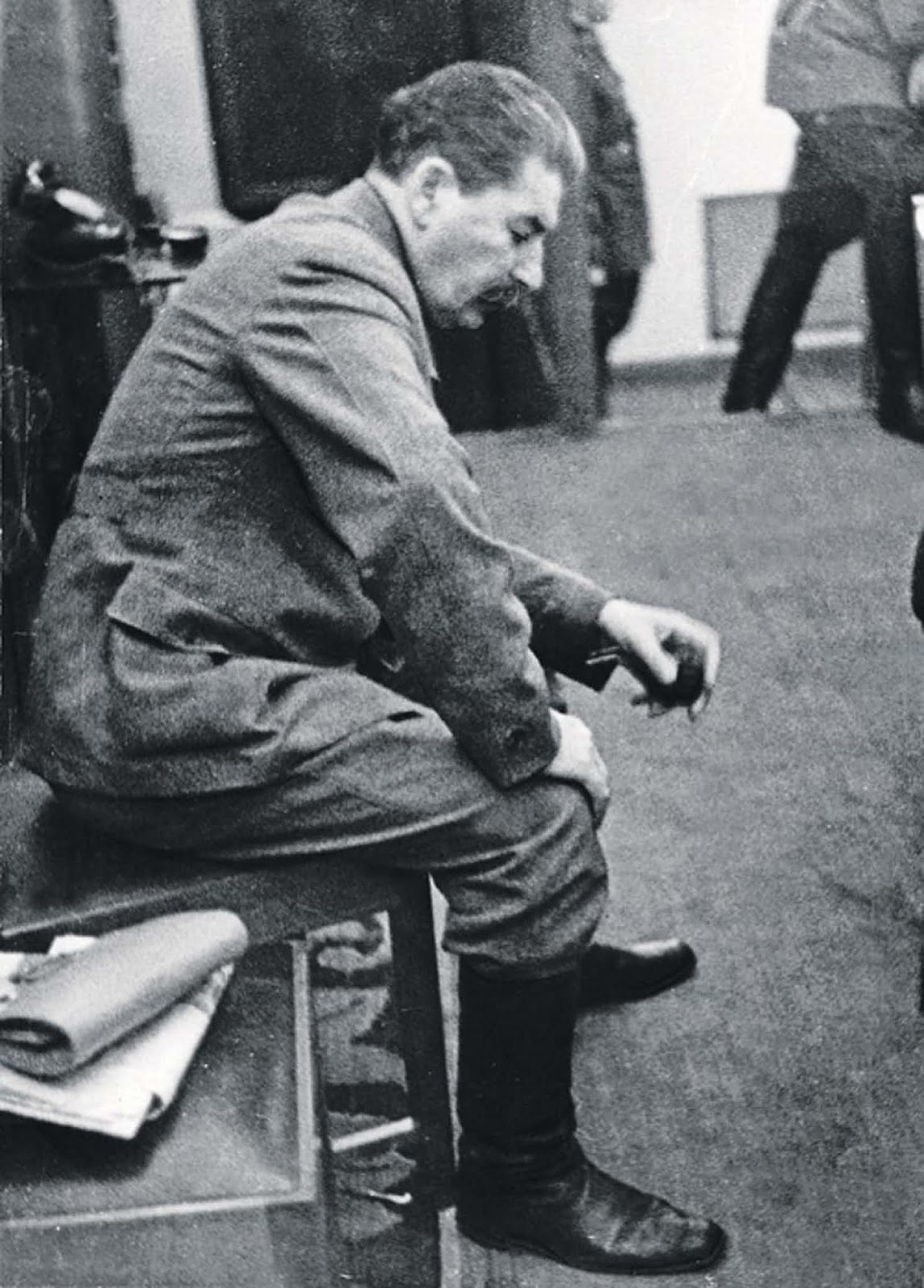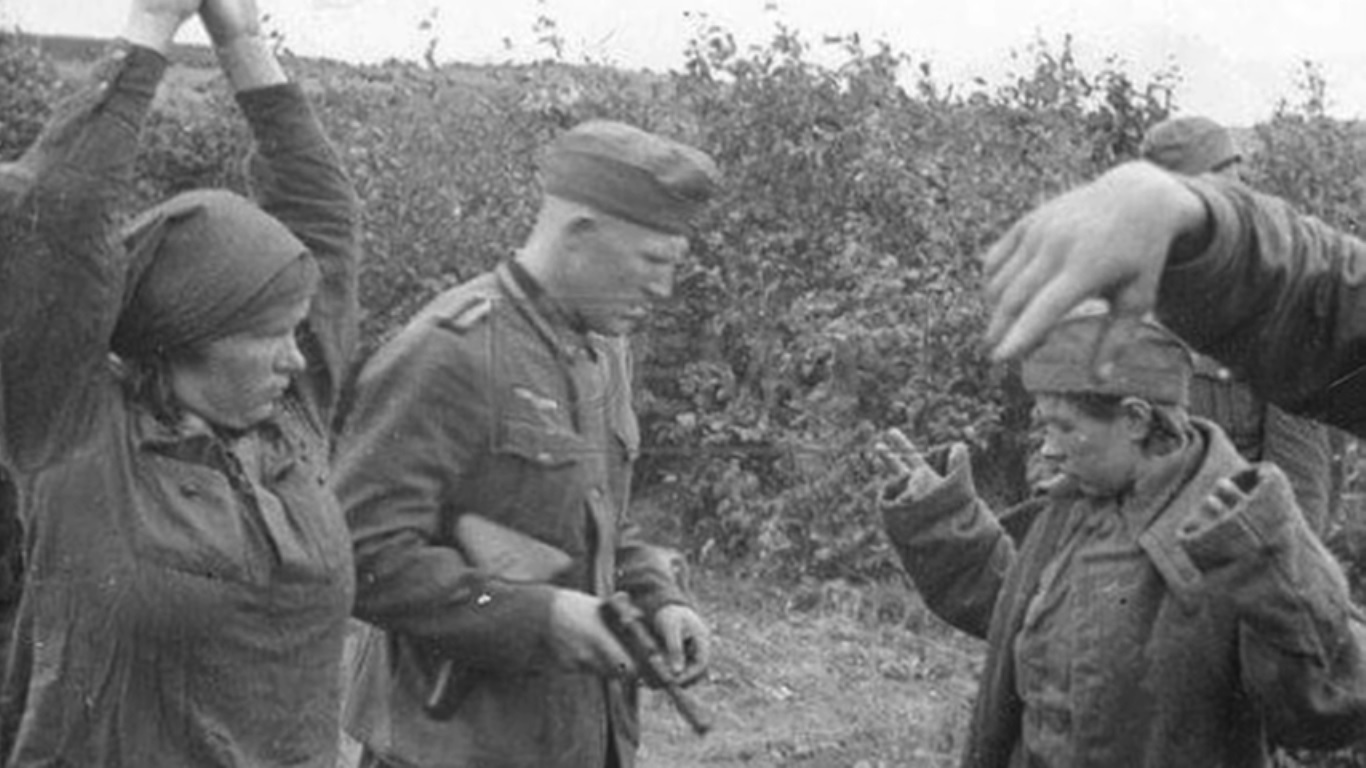Ramzan Kadyrov’s Chechens, the so-called “Kadyrovites,” were ordered to open fire on Russian soldiers who refused to be front-line cannon fodder in Ukraine, creating an uproar among news readers. Aggressive action is by no means a first for Russian military thinking.
Winston Churchill and Joseph Stalin in 1944Photo: akg-images / AKG / Profimedia
So, during the Second World War, there was the famous Order 227 issued by Stalin on July 28, 1942, called ‘No Backward Step’.
Simply put, it ordered the formation of special blocking units to prevent the assault troops from retreating to the trenches. Apart from this there were other rules such as forbidding the troops to leave their positions under threat of very severe penalties.
227 Context in which the order was issued
As is well known, Project Barbarossa – the invasion of the Soviet Union by Nazi Germany and its allies – caught the Red Army in total disarray. At the start of the campaign, the Russian army suffers heavy losses in men and supplies. The causes of this disaster are many and must be sought in the interwar period.
First, we are talking here about Stalin’s massive purge of the bureaucracy starting in 1937. Thus, in a paranoia based on false information leaked by German secret agents, the Soviet dictator would eliminate, and prosecute and execute, most of the top officers of the Red Army.
Joseph Stalin (rarehistoricalphotos.com)
They are often militarily incompetent, drawn from the lower ranks, or appointed on political criteria.
Another major cause of Russian defeat during this period of the war was poor equipment and inadequate training. It should not be forgotten that they were preceded by veteran troops who had served well and gained experience in campaigns in Poland, France, the Netherlands and the Balkans.
The fighting technique of the Russians, despite their vast numbers, was technologically superior, with tanks and aviation unmatched by the Germans at the time as prime examples.
Another thorny problem faced by the Red Cross in the first months of the war was the lack of adequate logistics, long supply lines or none at all.
However, the courage and selflessness of the Russian soldier cannot be doubted. Thus, despite being intoxicated by Nazi propaganda, German troops were forced to recognize this feature.
In the first months of the offensive, the Germans occupied large territories and in December 1941 reached the outskirts of Moscow, from where they were driven out with great difficulty. This gives them an aura of invincibility in the eyes of the Russians, especially after the disaster of the First Battle of Kiev.
Here, the Germans managed to encircle at least four Soviet armies, the battle between August and September 1941, the number of Russian prisoners exceeded 600 thousand.
Initial directions of the German attack
It should be noted that by all estimates, this is the largest number of prisoners of war taken in history.
Such disasters, or in Rostov-on-Don, where Russian soldiers panicked and fled, leaving the city to the Germans, led to the idea of issuing a popular order in Stalin’s mind.
‘Don’t Back Down’, Content and Consequences
Decree 227 was issued by Stalin on July 28, 1942. In the Soviet dictator’s defense, it must be said that the move could not have come at a better time.
The army was completely disorganized, morale was low, and the lost large territories, among them the largest Ukrainian grain fields, began to have their say on Russian resources.
“The creators of panic and cowardice must be liquidated on the spot. Not a single step back without an order from the higher headquarters! Commanders who abdicate without orders from the higher headquarters are traitors to the motherland” – this is the most famous fragment of the issued order.
It is obvious that some action must be taken, otherwise, most likely, the battle is lost. On the other hand, the brutality and absurdity with which Order 227 was implemented is appalling.
Blockade units were sent in, special NKVD troops whose task it was to ‘prevent’ units sent to attack from returning to their original positions.
German troops advance into Russia
How did they do this?
By placing machine-gun nests in their own trenches, they had the sole role of shooting their own soldiers if they wanted to run. Even strategic retreats from unguarded positions are no longer permitted.
In such cases, political officials, known as commissars, created ad hoc military tribunals and, in most cases, executed the criminals.
At the same time, the number of special units – political and communal – called criminal battalions – formed from low-ranking soldiers or prisoners – increased.
In theory, the Soviet Union gave these troops another chance to rehabilitate themselves and, after impeccable conduct, were able to return to their original units.
In fact, their missions, most of the time, were tantamount to suicide, always being sent to the front lines, the most dangerous and the least likely of successful attacks.
Sometimes they were used to weaken German positions by attacking them frontally with mines, followed by an attack by regular units.
Consequences of Order 227 and its legacy over time
Russian military philosophy is different from other country. Since the tsarist era, the loss of human life has not suited Russian generals.
Decree 227 has to be understood from the perspective of this aspect. Experts are divided on this move taken by Stalin in July 1942.
Thus, there is Russian historiography, which shows the darker aspects of an otherwise transparent and logical order. Russian historians consider this a necessity, and believe that without this action, the war might have been lost.
To the same extent, there is a category of researchers who believe that many Russians could have avoided the barbarity with which the order was carried out, avoiding the innocent deaths.
Surrendering Soviet military women
As usual, the truth lies somewhere in the middle. So, as I said earlier, state affairs need drastic action. On the other hand, the manner in which the order was applied, the arbitrary decisions taken, are at least questionable.
At the same time, there is an opinion that by issuing Order 227, Stalin, as Supreme Commander, made a desperate gesture to cover up his own mistakes. We refer here to the lack of vigilance of the army and the purging of the officer corps in the days preceding the commencement of the invasion.
The similarity we see today in the situation in Ukraine is clear. Kadyrovite units, unable to be trusted with solid performance at the front, are used as blocking units to intimidate troops who lose the courage or will to fight and decide to retreat.
As we can see, an old practice in the Russian military is to disregard the lives of one’s own people.
This explains the enormous losses suffered by the Russians in World War II and the considerable losses they have sustained in the current invasion of Ukraine.
Notes:
– M. Jones – How the Red Army won
– Liddell Hart – History of World War II
– Robert H. McNeil – Resolutions and Decisions of the Communist Party of the Soviet Union
– Marina Osipova – With love from Stalin
Read other articles by Andrei Stan:

“Evil gamer. Amateur music trailblazer. Alcohol geek. Problem solver. Coffee advocate. Troublemaker. Infuriatingly humble zombieaholic.”




